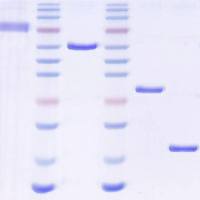Experimental Manipulation and Morphometric Analysis of Neural Tube Development
互联网
400
The morphology of the early embryonic vertebrate neural tube differs significantly in the brain and spinal cord anlages. Although both are hollow, the early embryonic brain has a larger cavity volume than tissue volume, whereas the spinal cord consists mostly of tissue and a reduced cavity. Growth of these two central nervous system (CNS) anlages therefore requires attention to both fluid and tissue dynamics as well as to tissues outside the CNS, namely the mesenchyme and skin ectoderm. By measuring the volumes of the tissue and cavity compartments of the brain as well as the cell number, rates of DNA synthesis, and mitosis of the neuroepithelium, it is possible to gain a better understanding of the cellular mechanisms involved in growth of the CNS. Volume assessment over time gives us an idea of change in size, whereas the details of cell behavior tell us how this changes occurs. Collectively, these changes in size and shape of the CNS are analyzed by morphometric techniques that, to date, have required performing measurements on serial sections of properly fixed and prepared embryos. Most likely in the near future, imaging techniques utilizing magnetic resonance proper will obviate the need to fix and section embryos. However, because these sophisticated imaging techniques are not yet available to mainstream research laboratories, this chapter focuses on performing morphometrics on sectioned and whole embryos.







